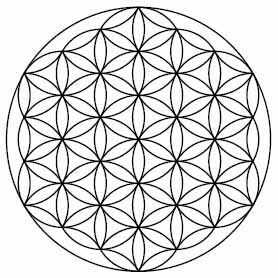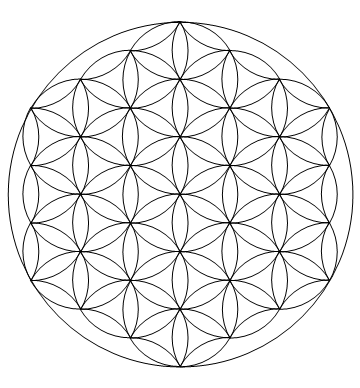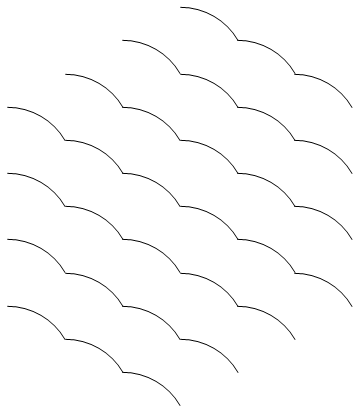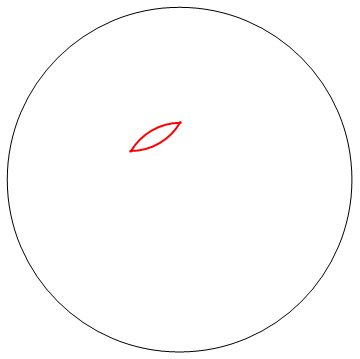19
0
The challenge here is to accurately depict the flower of life (which is a sacred geometrical figure according to some) in the language of your choice.

The design consists an arrangement of circles and partial circles of radius 1 as shown whose centres arranged on a triangular grid of pitch 1, plus one larger circle of radius 3 surrounding them.
The design can be scaled as you like, but a max error of 2% from mathematically correct is permitted. If using raster graphics, this effectively limits the diameter of the small circles to at least about 100 pixels.
Since this is code-golf, shortest code (bytes) wins.



10Welcome to the site! Just so you know, it's generally encouraged to wait a while before accepting an answer, that way other users won't see the contest as "over", and there will be more participation and competition. – James – 2016-11-14T05:26:14.083
2
"visual, recognizable, and correct" is neither clear nor objective. It's impossible to determine whether or not a submission is valid without objective validity criteria. We encourage use of the Sandbox to work out any potential issues with challenges before posting them to the main site.
– Mego – 2016-11-14T09:37:42.690In addition to such abstract rule like “recognizable”, would be better to specify a minimum size. – manatwork – 2016-11-14T11:03:12.240
Since nobody's plugged it yet, we have a sandbox over at the meta that is designed to help new challenges get feedback. You can find it here: http://meta.codegolf.stackexchange.com/questions/2140/sandbox-for-proposed-challenges
– tuskiomi – 2016-11-14T16:13:11.7471It's actually not just 19 circles. There are some circular arcs at the edges as well. (6 of them covering an angle of 2π/3, 12 covering π, 18 covering π/6) – Martin Ender – 2016-11-14T19:27:32.717
@MartinEnder Yeah, I just reached the point of completing the circles, then I realized I was missing this. It's making me rethink whether it's worth the effort. – mbomb007 – 2016-11-14T19:39:34.240